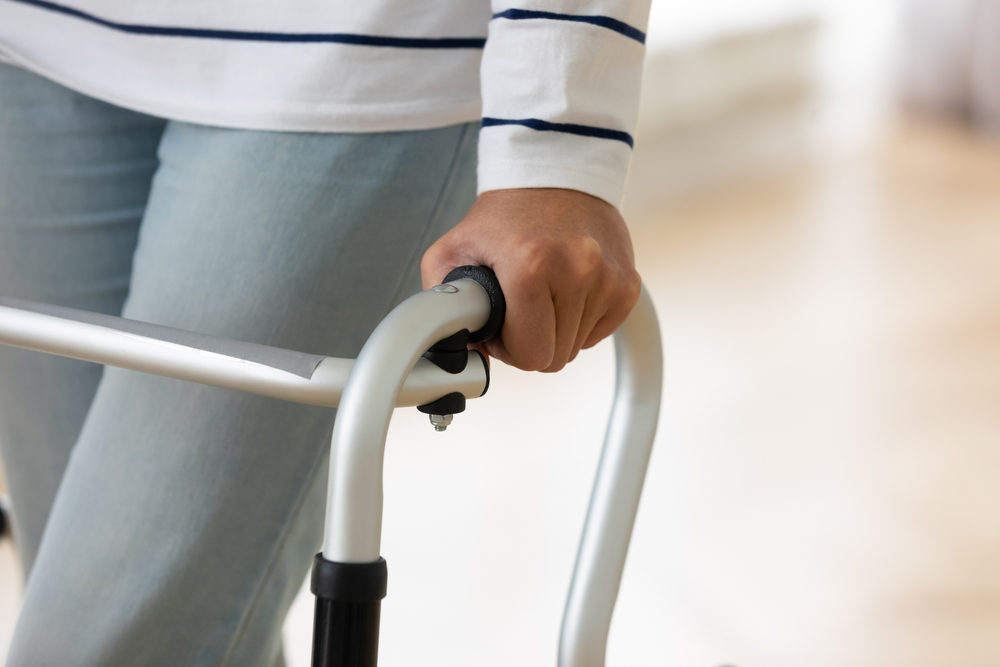A groundbreaking blend of neurotechnology and artificial intelligence has enabled a paralysed man to walk using only his thoughts, a major leap forward in neurological rehabilitation.
In an unprecedented achievement, researchers have successfully used a “Thought-Powered Walking” system to restore mobility to a man paralysed for over a decade.
This innovative technology, which combines a brain-computer interface and a spinal implant, has helped Gert-Jan Oskam, aged 40, regain the ability to walk using nothing but his thoughts. This marks the first instance of a completely thought-controlled walking system, making this a significant milestone in the field of neurorehabilitation.
Spinal cord injuries are a global health concern, with an estimated prevalence of 236 to 1009 cases per million people. In Asia, the incidence is particularly high, with China, for instance, witnessing around 60,000 new spinal cord injury cases each year.
Paralysed Man Takes Steps with AI
Gert-Jan Oskam, a Dutch national, had been wheelchair-bound for over a decade following a bicycle accident that caused a severe spinal cord injury. But with the help of a pioneering system developed by researchers in France and Switzerland, he can now walk “naturally”, navigate difficult terrain and even climb stairs.
This impressive achievement is the culmination of more than a decade of diligent work. Just last year, the same team demonstrated the potential of a spinal cord implant that delivers electrical pulses to stimulate leg muscle movement, enabling three paralysed patients to walk again.
Yet, these patients had to press a button each time they wanted to move their legs. Oskam, who also received the spinal implant, noted that this requirement made it challenging to establish a “natural step” rhythm.
The Technology:
The latest innovation combines the spinal implant with a brain-computer interface, a new technology implanted above the part of the brain that governs leg movement. This interface employs artificial intelligence algorithms to decode brain signals in real-time. Designed by researchers at France’s Atomic Energy Commission (CEA), the interface discerns the patient’s intention to move their legs at any given moment.
The interface communicates with the spinal cord implant via a portable device small enough to fit in a walker or a tiny backpack, providing patients the freedom to move around without assistance from others. The two implants work in tandem to form a “digital bridge”, overcoming the disconnection between the brain and spinal cord caused by Oskam’s accident.
Real-World Impact
Following invasive surgery to implant both devices, it’s been a transformative journey for Oskam. “Now I can just do what I want — when I decide to make a step, the stimulation kicks in as soon as I think about it,” he shares.
This newfound independence extends to simple pleasures like standing at a bar with friends while enjoying a drink. “This simple pleasure represents a significant change in my life,” he adds.
A Revolutionary Leap: Thought-Powered Walking System
This breakthrough is “radically different”. That’s the view of Gregoire Courtine, a neuroscientist. He’s affiliated with Switzerland’s Ecole Polytechnique Federale de Lausanne. Also, he’s a co-author of the study.
There’s been a promising development. After six months of training with the “digital bridge”, Oskam saw progress. He regained some sensory perception. He also recovered motor skills lost in the accident. Now, he can walk with crutches. He can navigate uneven surfaces too. This is a significant improvement from the button-activated system.
However, the researchers are careful to note that the “Thought-Powered Walking” system will not be a solution for all spinal cord injury patients, and more research is required to determine its broader applicability. “This is a first step,” says Courtine, “but it’s a promising one.”
As the technology continues to evolve, it may offer hope to millions of people living with paralysis. It also underscores the powerful potential of AI in transforming medical treatments and improving patients’ quality of life. From enabling people to communicate using only their thoughts to now helping them walk, AI is truly opening new frontiers in healthcare.
Implications for AI in Neurorehabilitation
Thought-Powered Walking represents a significant milestone in neurorehabilitation, showcasing the enormous potential of neurotechnology and artificial intelligence in medical treatments.
This groundbreaking advancement could transform spinal cord injury patients’ lives. It offers new avenues for mobility and independence.
However, it’s still early days for this pioneering technology. More research is needed. We need to ascertain its full potential and applicability. Despite these uncertainties, Gert-Jan Oskam’s story offers hope. It is a beacon to those living with paralysis. His journey is a testament to human resilience. It also showcases the power of scientific innovation.













